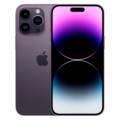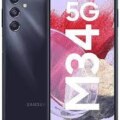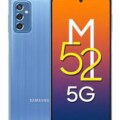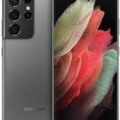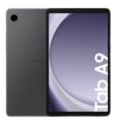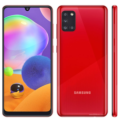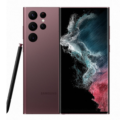- Home
- All Products
- Mobiles
- Apple iPhone 12 Price & Specs
Apple iPhone 12 Price & Specs
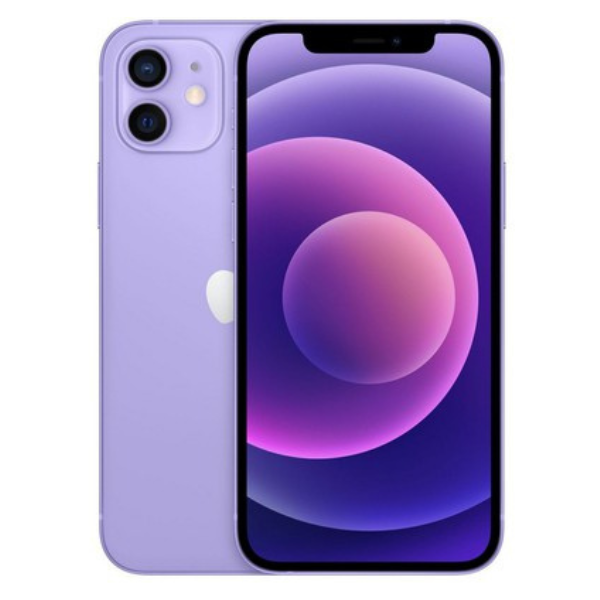

-
Processor: Apple A14 Bionic
-
RAM: 4 GB
-
Storage: 64 GB, 128 GB, 256 GB
-
Display: 6.1
-
Camera: 12MP
-
Battery: IOS 14.1
Specs
General
| Device Type | Smart Phone |
| Model | Apple iPhone 12 |
| Announced | 13 November, 2024 |
| Released | 13 November, 2024 |
| Status | Available |
Network
| 2G Network |
SIM1: GSM 850 / 900 / 1800 / 1900 SIM2: GSM 850 / 900 / 1800 / 1900 |
| 3G Network |
HSDPA 850 / 900 / 1700(AWS) / 1900 / 2100 |
| 4G Network |
LTE band 1(2100), 2(1900), 3(1800), 4(1700/2100), 5(850), 7(2600), 8(900), 12(700), 13(700), 17(700), 18(800), 19(800), 20(800), 25(1900), 26(850), 28(700), 29(700), 30(2300), 34(2000), 38(2600), 39(1900), 40(2300), 41(2500), 66(1700/2100) |
| 5G Network |
SA/NSA/Sub6/mmWave |
| SIM <strong>SIM</strong> (Subscriber Identity Module) is a small card that contains mobile network subscriber's account information. This allows the phone using the card to attach to a mobile network. The SIM card is most commonly associated with GSM and UMTS mobile networks. Moving a SIM card from one phone to another allows a subscriber to switch mobile phones without having to contact their mobile network carrier. SIM cards can also be used by a phone to store limited amounts of data, such as phone numbers and text messages. | Nano SIM |
| Dual SIM | eSIM |
Design
| Type <strong>Design Type</strong> called form factor refers to a mobile phone's size, shape, and style as well as the layout and position of major components of phone. There are three major form factors seen in mobile phones => bar phones, folding phones and sliding phones. | Bar |
| Dimensions | 146.7 x 71.5 x 7.4 mm |
| Weight | 164 g |
| Material | Glass front (Gorilla Glass), glass back (Gorilla Glass), aluminum frame, IP68 dust/water resistant (up to 6m for 30 mins) |
| Colors |
Black, White, Red, Green, Blue |
Display
| Display Type <strong>Display Technology => </strong> A number of display technologies and types used in mobile phones => TFT (Thin Film Transistor), IPS (In-Place Switching), OLED (Organic Light Emitting Diode), AMOLED (Active-Matrix Organic Light-Emitting Diode), Super AMOLED (an even advanced version of AMOLED), Resistive Touchscreen (Resistive touchscreens contain two layer of conductive material with a very small gap between them which acts as a resistance), Capacitive Touchsceen (Capacitive touchscreen technology consists of a layer of glass coated with a transparent conductor) | Super Retina XDR OLED Capacitive Touchscreen |
| Size | 6.1 Inches |
| Resolution | 1170 x 2532 Pixels |
| Display Colors <strong>Display Colors</strong> is refers to the number of different shades of colors that the screen is capable of displaying => 64K colors, 256K colors and 16 million colors, Obviously 16M is highest available range of colors and better than others. | 16M colors |
| Pixel Density <strong>Pixel Density (PPI)</strong> is refers to the concentration of pixels on a particular display, measured in pixels per inch (ppi). Pixel density is calculated by dividing the diagonal pixel resolution of a display by its diagonal size, higher pixel density better display quality. | 457 PPI |
| Display Protection <strong>Display Protection => </strong> Gorilla Glass is a special alkali-aluminosilicate glass shield with exceptional damage resistance that helps protect mobile displays from scratches, drops, and bumps of everyday use, It is always better to go for a smartphone with Gorilla Glass for that added protection and peace of mind. | Scratch-resistant glass, oleophobic coating |
| Features |
HDR10, 625 nits (typ), 1200 nits (peak), Dolby Vision, Wide color gamut, True-tone |
Software
| Operating System <strong>OS => </strong> Every computer system run on a base software called Operating System (OS). Operating System controls all basic operations of the computer (such as smartphone, PDAs, tablet computers and other handheld devices). The Operating System allows the user to install and run third party applications (apps), apps are used to add new functionality to the device. | IOS 14.1 |
| User Interface <strong>UI</strong> or user interface of a device is the look and feel of the on-screen menu system. How it works, its color scheme, how it responds to button presses, all of these things are part of the user interface. | iOS UI |
Hardware
| Chipset <strong>Chipset</strong> is a group of integrated circuits designed to perform one or a more dedicated functions, often with real time computing constraints, Popular smartphones are equipped with more advanced embedded chipsets that can do many different tasks depending on their programming. | Apple A14 Bionic (5 nm) |
| CPU <strong>CPU</strong> (Central Processing Unit) mostly known as processors, CPU processes instructions in order to carry out certain functions that make your device operate properly. Processors are often described as the brain of computers, smartphones and tablets, Smartphones and tablets rely on processors to carry out their every task, Processors are an incredibly important factor in selecting any type of computing device, including your smartphone. | Hexa-core (2 x 3.1 GHz Firestorm + 4 x 1.8 GHz Icestorm) |
| GPU <strong>GPU</strong> (Graphics Processing Unit) is a single-chip processor designed to rapidly manipulate and alter memory to accelerate the creation of images in a frame buffer intended for output to a display, This includes things such as lighting effects, object transformations, and 3D motion. | Apple GPU (4-core graphics) |
| RAM (Memory) <strong>RAM</strong> (Random Access Memory) is a type of computer memory that can be accessed randomly, any byte of memory can be accessed without touching the preceding bytes that allows information to be stored and accessed quickly from random locations. RAM is the most common type of memory found in computer systems, smartphones, tablets and other electronic devices. | 4 GB |
| Internal Storage <strong>Internal Storage</strong> is a data storage space (flash memory) mostly used in smartphones, tablets and other electronic devices where operating system, apps, music, photos, videos, files and other user data Is stored. | 64GB, 128 GB, 256 GB |
| Card Slot <strong>Memory Card Slot</strong> is a special slot for inserting a memory card. Memory cards allow you to expand the phone's built-in memory, A memory card (sometimes called a flash memory card or a storage card) is a small storage medium used to store data such as text, pictures, audio, and video, for use on small, portable or remote computing devices such as mobile phones, mp3 players, digital cameras. | |
| Sensors <strong>Sensors</strong> are electronic components that detects and responds to some type of input from the physical environment. The specific input could be light, heat, motion, moisture, pressure and location, The output is generally a signal that is converted to use in computing systems, a location sensor, such as a GPS receiver is able to detect current location of your electronic device. |
Accelerometer, Compass, Face ID, Gyro, Proximity |
Camera
| Primary <strong>Camera</strong> is able to capture photographs and usually videos, The most important characteristics of a camera are the resolution (measured in megapixels), lens focus type (fixed or automatic), higher megapixel cameras are known to capture higher quality photos, but not always a good measurement of the photos quality. | Dual Camera: 12 MP, f/1.6, 26mm (wide), dual pixel PDAF, OIS + 12 MP, f/2.4, 13mm (ultrawide), 1/3.6", Quad-LED dual-tone flash |
| Secondary | Dual 12 MP, f/2.2, 23mm (wide), 1/3.6" + SL 3D, (depth/biometrics sensor), HDR, Video (4K@24/30/60fps, 1080p@30/60/120fps, gyro-EIS) |
| Video | 4K@24/30/60fps, 1080p@30/60/120/240fps, HDR, Dolby Vision HDR (up to 30fps), stereo sound rec. |
| Camera Features |
Phase detection, OIS, Geo-tagging, touch focus, face/smile detection, HDR (photo/panorama), Video (4K@24/30/60fps, 1080p@30/60/120/240fps, HDR, Dolby Vision HDR (up to 30fps), stereo sound rec.) |
| Flash <strong>Flash Light => </strong> There is commonly two types of flash lights are used in camera mobile phones, LED Flash (LED flash offers lower power consumption with drive circuitry that takes up very little room, LEDs can be strobed faster than any other light source), Xenon Flash (xenon flash produces an extremely intense full-spectrum white light for a very short duration) |
Connectivity
| Wi-fi <strong>Wi-Fi</strong> is a popular wireless networking technology using radio waves to provide high-speed network connections that allows devices to communicate without cords or cables, Wi-Fi is increasingly becoming the preferred mode of internet connectivity all over the world. | Wi-Fi 802.11 a/b/g/n/ac/6, dual-band, hotspot |
| Bluetooth <strong>Bluetooth</strong> is a wireless communications technology for exchanging data between mobile phones, headsets, computers and other network devices over short distances without wires, Bluetooth technology was primarily designed to support simple wireless networking of personal consumer devices. | v5.0 with A2DP, LE |
| GPS <strong>GPS</strong> The Global Positioning System is a satellite-based radio navigation system, GPS permits users to determine their position, velocity and the time 24 hours a day, in all weather, anywhere in the world, In order to locate your position, your device or GPS receiver must have a clear view of the sky. | Yes + A-GPS support, & GLONASS, GALILEO, QZSS |
| Wi-fi Hotspot | |
| USB | Lightning, USB 2.0 |
| NFC <strong>NFC</strong> (Near field communication) is a set of standards for smartphones and similar devices to establish peer-to-peer radio communications with each other by touching them together or bringing them into proximity, usually no more than a few inches. | |
| Wireless Charging <strong>Wireless Charging</strong> (Inductive Charging) uses an electromagnetic field to transfer energy between two objects. This is usually done with a charging station. Energy is sent through an inductive coupling to an electrical device, which can then use that energy to charge batteries or run the device. |
Data
| GPRS <strong>GPRS</strong> (General Packet Radio Service) is a packet oriented mobile data service on the 2G and 3G cellular communication system's global system for mobile communications (GSM), Generally, GPRS is used for the purpose of wireless data transfer, such as sharing pictures and videos or browsing the Internet via a mobile phone connection. | |
| EDGE <strong>EDGE</strong> (Enhanced Data GSM Environment) is a wireless network technology generally considered the next step in the 2G network offers data transfer rates up to four times faster than ordinary GSM networks, Generally, EDGE is used for the purpose of wireless data transfer, such as sharing pictures and videos or browsing the Internet via a mobile phone connection. | |
| Speed | GPRS, Edge, 3G (HSPA 42.2/5.76 Mbps), 4G LTE-A, 5G capable, EV-DO Rev.A 3.1 Mbps |
Messaging
| SMS <strong>SMS</strong> (Short Messaging Service) is a text messaging service component of phone, Web, or mobile communication systems. It uses standardized communications protocols to allow mobile phone devices to exchange short text messages over the networks. | Yes |
| MMS <strong>MMS</strong> (Multimedia Messaging Service) is a standard way to send messages that include multimedia content (audio clips, video clips and images) to and from mobile phones over wireless networks using the WAP protocol. | |
| Email <strong>Email</strong> (Electronic Mail) is a system for receiving, sending, and storing electronic messages, Similar to a letter, email is text messages that may contain files, images, or other attachments sent via the internet to a recipient by using applications and software prograps. An email address is required to receive email, and that address is unique to the user. |
Media
| Audio Playback | |
| Video Playback | |
| FM Radio | |
| Loudspeaker | |
| Ring Tones | MP3, WAV |
| Alert Types | Vibration, ringtones |
| Handsfree | No |
Battery
| Battery Type <strong>Battery Type => </strong> Cell phones run on various kinds of batteries depending on the manufacturer, phone size or shape and features. There are basically four types of cell phone batteries => Lithium Polymer, Lithium Ion, Nickel Metal Hydride and Nickel Cadmium. | Li-Ion (Lithium Ion) |
| Capacity <strong>Battery Capacity</strong> is a measure (typically in Amp-hr) of the charge stored by the battery, and is determined by the mass of active material contained in the battery. The battery capacity represents the maximum amount of energy that can be extracted from the battery under certain conditions. | 2815 mAh |
| Placement | Fixed |
| Talk Time <strong>Talk Time</strong> is the longest time that a single battery charge will last when you are constantly talking on the phone under perfect conditions, Ambient temperature and highly dependent on the cellular network environment such as the distance to the closest cell network tower. | up to 17 hrs |
| Music Play | up to 65 hrs |
The Apple iPhone 12 is a high-end smartphone released by Apple in October 2020. It has an A14 Bionic chip with 5G connectivity, a 6.1-inch Super Retina XDR display with a Ceramic Shield front cover, a dual-camera system with Night mode for better low-light photography, and all of these features. Additionally, it supports Face ID for security and MagSafe wireless charging. The iPhone 12 is a powerful, svelte device with the newest features and technology.
Table of Contents
Feature of iPhone 12
- 5G connectivity: The iPhone 12 is compatible with 5G connectivity, which enables faster download and upload speeds.
- A14 Bionic chip: Apple’s newest A14 Bionic chip, which offers quick and effective performance, powers the iPhone 12.
- OLED screen: The 6.1-inch OLED screen on the iPhone 12 has a resolution of 2532 x 1170 pixels, providing clear and vibrant images.
- Ceramic Shield: The new Ceramic Shield cover on the front of the iPhone 12 is intended to be four times more drop-resistant than the covers on earlier iPhone models.
- Dual-camera system: With a 12-megapixel wide camera and a 12-megapixel ultra-wide camera, the iPhone 12 has a dual-camera system. Additionally, it has a Night mode feature for better photography in low light.
- MagSafe: The new MagSafe charging system for the iPhone 12 uses magnets to firmly fasten a charger or other accessories to the back of the device.
The iPhone 12 has generally been praised for its performance, design, and camera qualities. It is a robust and feature-rich smartphone.
Design
The Apple iPhone 12 has a sleek, modern design with flat edges and a strong aerospace-grade aluminium frame. The front of the phone has a Ceramic Shield cover that is intended to be more robust and resistant to cracks and scratches. The phone’s glass back has a matte finish that resists fingerprint smudges.
There are five colour options for the iPhone 12: black, white, red, green, and blue. The colours are striking and attractive, and they go well with the overall aesthetic of the phone. The phone is easy to hold in one hand and use because it is lightweight and thin.
Overall, Apple’s attention to detail and dedication to quality is evident in the elegant and contemporary design of the iPhone 12. It is a gorgeous phone that is sure to catch people’s attention and dazzle users.
Camera
The Apple iPhone 12 features a dual-camera system with a 12-megapixel ultra-wide camera and a 12-megapixel wide camera. As a result of the cameras’ larger apertures, which let in more light, low-light photography is improved.
The ultra-wide camera’s 120-degree field of view makes it perfect for taking interior shots, group photos, and panoramic landscapes. The wide camera is equipped with optical image stabilisation (OIS), which allows it to take detailed pictures with rich colour and good contrast. Both cameras have a night mode that enables users to take clearer, brighter pictures in dim lighting.
Additionally, the iPhone 12 is capable of recording 4K Dolby Vision HDR video, which yields stunning films with a wide dynamic range and vivid colours. The phone’s OIS, which helps to stabilise shaky footage and produce smooth and steady videos, further improves the video recording capabilities.
In general, the iPhone 12’s camera system is impressive and capable of taking high-quality pictures and videos. The iPhone 12 is certain to produce top-notch results whether users are taking pictures of their loved ones or capturing breathtaking landscapes.
Performance
The Apple iPhone 12 is powered by Apple’s newest A14 Bionic chip, which is based on a 5-nanometer process and offers high-speed performance and improved power efficiency. Six cores make up the A14 Bionic chip, one of which is a high-performance core that can perform up to 50% faster than the A13 chip used in the previous iPhone models.
Additionally, the iPhone 12 supports 5G connectivity, which offers faster download and upload speeds than earlier iPhone iterations. For streaming high-definition videos, playing online games, and using data-intensive applications, 5G connectivity is ideal.
The iPhone 12’s optimised hardware and software also contribute to its long-lasting battery life in addition to its potent processor and quick connectivity. On a single charge, the phone can play video for up to 17 hours.
The performance of the iPhone 12 is excellent overall, and it can easily handle even the most difficult tasks and applications. The iPhone 12 offers a fluid and lag-free experience whether users are playing games, streaming videos, or browsing the web.
Storage
Different storage options for the Apple iPhone 12 are offered to accommodate various needs. It has four different storage options, including 64GB, 128GB, 256GB, and 512 GB.
For users who don’t need to store a lot of data or files on their phones, the 64GB model is the least expensive choice. The most popular model, with a storage capacity of 128GB, is best for users who keep a reasonable number of photos, videos, and other files on their phones. Although more expensive, the 256GB and 512GB models provide plenty of storage for users who need to store large amounts of data or who use their phones for work-related activities like photography or videography.
The iPhone 12 does not support expandable storage, so users cannot add more storage by using a microSD card or other external storage device. This is an important distinction to make. Therefore, it’s crucial that users select the iPhone 12’s storage option that best suits their needs.
Processor
The Apple iPhone 12 is powered by the company’s newest A14 Bionic chip, which has a six-core CPU and a four-core GPU and is built using a 5-nanometer process. In comparison to earlier iPhone models, the A14 Bionic chip offers high-speed performance and increased power efficiency.
The CPU of the A14 Bionic chip has four high-efficiency cores that are up to 50% more power-efficient and two high-performance cores that are up to 50% faster than the CPU of the A13 chip. As a result, the iPhone 12 can manage demanding tasks and applications with ease and consume less power.
The GPU of the A14 Bionic chip can handle complex graphics-intensive tasks like gaming and augmented reality (AR) applications and is up to 50% faster than the GPU of the A13 chip. The new 16-core Neural Engine on the A14 Bionic chip, which has a maximum throughput of 11 trillion operations per second, makes it the perfect choice for machine learning tasks like image recognition and natural language processing.
Overall, the iPhone 12’s A14 Bionic chip is a strong and effective processor that enables it to deliver quick performance and responsiveness, making it the perfect choice for demanding tasks and applications.
Connectivity & Networking
A variety of networking and connectivity features are available on the Apple iPhone 12, including support for 5G, Wi-Fi 6, Bluetooth 5.0, and NFC.
The next-generation cellular technology, 5G, which offers faster download and upload speeds than 4G LTE, is supported for the first time by the iPhone 12 and is available in select markets. Users can easily use data-intensive applications, stream high-definition videos, and download large files thanks to 5G connectivity.
The newest Wi-Fi standard, Wi-Fi 6, which offers faster speeds and better performance than earlier Wi-Fi standards, is also supported by the iPhone 12. Users who want to benefit from faster speeds and better performance and have high-speed internet at home or at work should switch to Wi-Fi 6.
The iPhone 12 supports Wi-Fi 6, 5G, and Bluetooth 5.0, which offers faster speeds and a greater range than earlier Bluetooth standards. Users who want to connect their phone to wireless speakers, headphones, or other Bluetooth-enabled devices should use Bluetooth 5.0.
Finally, the iPhone 12 has near-field communication (NFC), which enables contactless Apple Pay payments. By simply touching two NFC-enabled devices together, users can also transfer files, pictures, and other types of data between them.
The iPhone 12 provides users with a wide variety of networking and connectivity options that enable them to be productive, entertained, and connected wherever they are.
Battery life of iPhone 12
The battery life of the iPhone 12 varies depending on usage and settings. The estimated battery life of the iPhone 12 is up to 17 hours of internet use, up to 11 hours of streaming video playback, and up to 65 hours of audio playback.
Apple iPhone 12 Pros & Cons
| Pros | Cons |
|---|---|
| Powerful A14 Bionic chip | Incremental upgrades |
| Solid battery life | Only 64GB of base storage |
| Excellent camera | 60Hz display |
| Elegant design | No more earbuds in the box |
| MagSafe fast charging | No charger or headphones in the box |
iPhone 12 Price in Pakistan
Apple iPhone 12 price in Pakistan is probably lower, though, as it is now an older model and has been replaced by many newer iPhone models like the iPhone 12 pro max and iPhone 13 but the new iPhone 12 price in Pakistan is around 175,599. Check websites like iShopping, OLX, or Daraz, to find the most recent iPhone 12 prices in Pakistan. Remember that prices on these websites can vary, and you should always exercise caution when buying from individual sellers.
Apple iPhone 12 different City Prices in Pakistan
| City | Price |
|---|---|
| Price in Islamabad | Rs175,599/- |
| Price in Lahore | Rs175,599/- |
| Price in Karachi | Rs175,599/- |
| Price in Quetta | Rs175,599/- |
| Price in Peshawar | Rs175,599/- |
| Price in Faisalabad | Rs175,599/- |
Conclusion
Apple iPhone 12 is a strong and premium smartphone with many cutting-edge features, such as 5G connectivity, a quick A14 Bionic chip, an OLED display, and an enhanced camera. However, the high price tag, lack of expandable storage, and absence of a charger and headphones in the box may dissatisfy some customers. Before purchasing anything, it’s crucial to carefully consider your needs and priorities, just like with any other product.
FAQ
What is the price of iPhone 12 in Pakistan?
IPhone 12 price in Pakistan is 175,599.
What is Apple iPhone 12 Launch Date?
The launch date of the Apple iPhone 12 is 2020, November 13.
Is iPhone 12 dual sim?
Yes, you can use Dual sim in it but one physical sim and one e-SIM.
Does iPhone 12 have 5G?
Yes, It’s compatible with 5G.
Is iPhone 12 waterproof?
The iPhone 12 is water-resistant. It has a rating of “IP68” which means they are fully protected from dust and can handle being underwater for up to 30 minutes at a depth of 6 meters.
Disclaimer: The Apple iPhone 12 prices listed on this page are sourced from local shops and dealers and are updated daily. While we strive for accuracy, we cannot guarantee that the price information of the Apple iPhone 12 provided on this page is 100% correct, as human error is possible. We recommend that you visit your local shop for exact pricing information. Thank you for your understanding.


